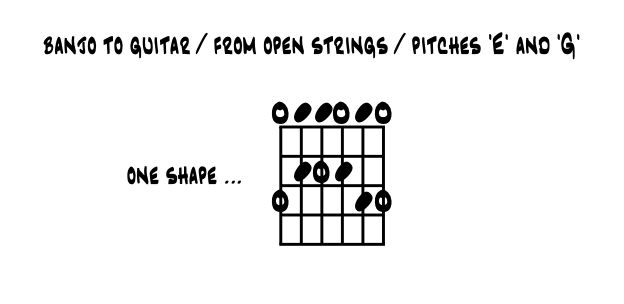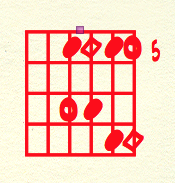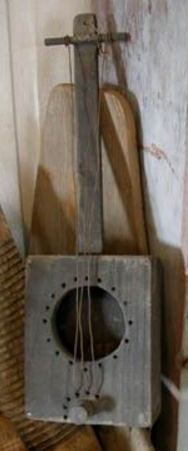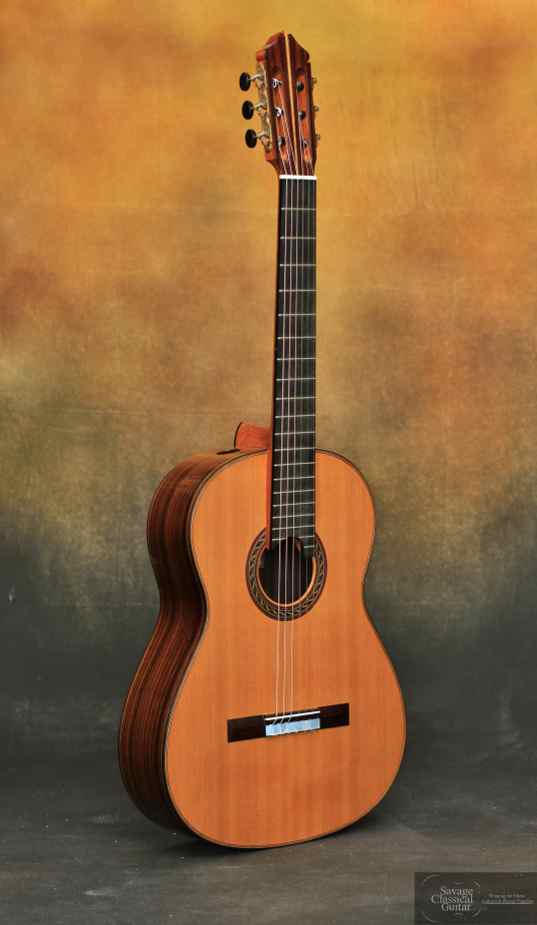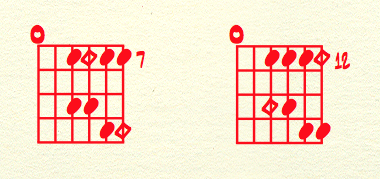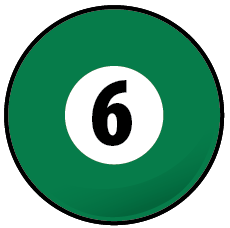The bending of the pitches; a big picture. Crazy but true, we've all seen it time and time again watching guitarists play, is that our pointing finger locates mucho big magics. With Americana bending of the pitches we're generally trending blue in our aural colors, and we've the blues elevator to get us up and down the fretboard, the index finger can anchor the way. For truth be told, in blues and rock playing with bends, we're bending the same notes in relation to the key of a song, just in different spots on the neck. Dig this elevator going up to all the 'G and E' spots and looking for spots of close proximity between the two notes. Example 1. |
|
|
Most common. A most common way to bend notes on strings is to anchor it all with the index finger, then use various combinations of middle, ring and pinky to push the strings around; push up or pull down. Use any and all fingers to get the notes U want, the best way to do this is your way, knowing that chops / technique evolve as new ways come along; for there's always a better (easier) way and endless bends and nuances to discover. |
So in first getting on the blues elevator, put your finger on any of the dots and find a first blue note bend; index on a dot, ring finger two frets up, and bend this note up to the minor and major 3rd intervals. Work through all the dots finding this same essential riff. Guaranteed ... that you'll find other cool notes and ideas by doing this. |
The physics. While anything with strings is bendable of pitch, sometimes the strings are just too thick, or the action is to high or the spirit is willing yet finger strength and dexterity are challenged. Just be realistic as to what your instrument is capable of. So in wanting to find the bends, the notes in between, try lighter strings, 'tuna downa' a bit to lower the tension and / or find a slide to start off with finding the pitches ya need to tell your stories. |
Pointing finger anchors. Crazy but true, we've all seen it time and time again watching guitarists play, is that our pointing finger locates mucho big magics. With Americana bending of the pitches we're generally trending blue in our aural colors, and we've the blues elevator to get us up and down the fretboard, the index finger can anchor the way. For truth be told, in blues and rock playing with bends, we're bending the same notes in relation to a key, just in different spots on the neck. |
One shape to rule them all. As the modern Americana guitar and its voice is historically banjo / blues based and built and tuned up to lean it all towards the pitches and keys of 'G and E', a most common theory riff is that anything that happens with this shape in open position, happens exactly the same way at the 12 fret with same everything; pitches, shapes and bends. Looks and sounds like this. Click pic to hear the shape in action, example 1. |
EMG method. We each get to teach ourselves how to bend pitches. It goes like this. To bend up to a note. Take a deep breath and play the upper note and sing the pitch and hold the note. Then play the note below and bend it up to the pitch. Match up as best you can. Keep trying as this ain't easy. Get with friends and ask around, each of us have our favorite bends to share. So we learn this all by ear pretty much and by listening to music and lifting the coolness other have already discovered for us. Once under our fingers, then we become the next gen to share with those coming up after us. In starting out with bending, this pentatonic shape yields a lot of the blues / rock bends over the last 75 years or so. Whammy bars. The modern guitar with a whammy bar is a pitch change game changer that empowered a whole new generation of players. who in turn each shared their ideas and discoveries with each other. Today, we've a whole library of whammy bends to explore, an evolution of musical culture of expression through a mechanical device at volume 11 :) Surely the best of both together , art and science and our creative, makes for more better. |
"Imagination is more important than knowledge." |
wiki ~ Albert Einstein |
Rumors. We often hear that to 'make every note count' is a way to bring our heartfelt emotions into the matter of creating melodies and melodic lines. And for those reading here that successfully bend and nuance their notes, will know this to be triple true. So it turns out that the easiest way to understand and eventually make every note count is by 'bending' some aspect of every note we sound, or trying too :) A spectrum of 'bending pitch.' So here in Essentials studies of the musical arts, 'bending' is more of a range of ways we nuance a note. From a quick squish vibrato sting stop when running on by through changes in eighth note streams to the complete stop and wait ... then super sting one note to start a turnaround motion to aim for the top of a new chorus, knowing that there's a wide range of possibilities in 'bending' gives each of us a way of adding a little of 'something extra' on any note, and bring our melody notes and its story to life. And telling your story. And in telling your own stories with music, finding your style and ways of bending a pitch in your mixes adds ink to your artistic signature. For we each are one of a kind in creative consciousness and thus, with patience with the learning process, can transfer these ideas to the notes, and bring our stories to a deeper and more vibrant musical life. So in following our 'note by note' approach to the theory, what each of the 12 notes can bring along to the mix, the following discussion looks at each of our numerical positions within our natural scale and suggests ways to 'bend' or shape each of these notes usually in the context of a chord, in a form of a song. From a simple 'warm it up' style vibrato any note to the full on 'bending one note's pitch into another' are examined. |
|
Bending pitch techniques. That we've a variety of guitars to try out, how we 'warm up or bend' pitches on each design varies, often dramatically. Why a Sticker ? Well, for beginners to realize that if we're playing an acoustic and want to bend notes like 'EVH', there's some adjustments that will probably have to be made in the physical aspects of making it happen. Warm up a note. For example, on a classical styled acoustic, full on bends can be tricky. So often just adding a poignant, sincere vibrato is about what the instrument will easily allow.
Using a slide. Steel strings acoustics are similar to classical nylon strings with bending, mostly, so the easy in to varying the pitches is with a slide.
The slide, often considered the next level of sophistication past the bending technique. Slide created melodies capture the Americana colors, both historically and style wise. And the technique, of placing some sort of bar on the strings to make notes and melodies, goes all the way back in time and all around the globe in probably every musical culture; past, present and future. Designed for bending. Since the 1950's now we've been building guitars that with a little trickery, truly become 'built right in' pitch bending machines. So if you're lucky enough to have one of these and with some lighter gauge strings, that's a bingo super theory game changer in the bending pitches local universe. For there's specially made guitars designed for super maximum bending of the strings. Here's an original shape and construction, then super modded with modern 'trickery' from later engineers to make it better, from on display in NYC museum. |
|
How we learn to bend. In theory, how we bend notes is very physical. So depending on your guitar, strings and setup, there's variables to how this goes. In beginning to bend pitches, simple sound the note you're looking for on the fretboard, then bend the one underneath it to that pitch level. Go back and forth and compare the two notes. Be patient as it'll probably take a while, plus we have to strengthen our hand to push the strings into tune. Ears to hear. The other side is 'theory hearing' the pitches clearly. Take time to get the 'ear to hear the theory labeled a bit with its vocabulary of what note is what as defined within a the key center in relation to a chord. While a challenge to begin, there's just three notes to master to begin. With diligent study, these we rote learn in a jiffy. Thus empowered, all will be well in the realm of the Americana musics and beyond as we venture forth to bring music to community. BENDING NOTES IS NOT EASY TO DO. Not easy at all, just keep trying and it'll happen. Be realistic too, remember that what guitar we're working with, acoustic or electric etc., plays a role in what bends that it'll accommodate. Cool ? Hint :) In my 50 years now of watching cats bend pitches and trying to do it myself, know that any fingering that allows us to initially get a pitch is correct. Knowing technique usually evolves as we go down the road as we'll discover and pick up new ways of doing things along the way. I often combine two fingers to get the strength to push a note up, usually ring and pinky, sometimes three by adding in the middle finger, and near always use the index finger to anchor the process. This is a basic approach that will work most of the pitches and common bends. Search and find an artist that bends pitches and watch what they do. If you can get a few pointers, then you're on your way. |
Vibrato. In bending any notes, or even in creating phrases, to 'warm up' a pitch with some sincere vibrato wiggling can make all the difference in helping our signature interpret melodies and testify. |
The notes we bend. In theory, any of the notes in a song's melody can be shaped around by bending. And while we'll find bending notes in all the styles somewhere, it's mostly a blues thing. And since the blue colors fit all through rock, pop and beyond into jazz, we've a solid basis to proceed. So that's the focus of the ideas and suggestions which follow. Knowing that, for beginning 'benders', there's a solid handful to start out with. Where you find places for them, in both major and minor key centers and songs, is your own artistry. Unless otherwise noted, near all of the following licks are from somewhere within this now ancient scale shape, which at the 5th fret gets us to the 'A and C' paired key centers. Do learn it here if need be. How this works. The following ideas for bending pitches revolves around the one scale shape, in two positions. Based in the guitar's built in key of 'E', the examples which follow sound the low 'E' string's harmonic at the 12 fret, which provides a pedal tone / background for supporting the pitch bends. |
common pitch bends |
motion in theory #'s |
audio mp3 |
|
| Usually just 'pushed around' with a wide vibrato or even bend big to near #1 and back to 1, over exaggerated. | |||
Two bends to both 3rd's; major and minor. |
|||
... two bends at first; just pull down or push up on the -3 and resolve to 1 and b3 to major 3rd :) |
|||
... pushing 2 up to 3 ... pure Americana country and on into all of the above :) |
|
||
... two bends pushed the same way; bend up 1/2 step to #4 bend up a whole step to 5. |
|||
Usually just 'pushed around' with a wide vibrato, it is the dominant so ... so with all due respect yes ... :) ... and from both 6'th's, minor and major are common and cool with wide wide swing available on '6 - 5' :) |
|||
Super vibrato this critter and bend it back to 5, bend 5 up to 6 and hold it for a while, bend 6 up 1/2 step to b7 and resolve to 8. |
|||
Bent to the tonic above super common or usually just 'pushed around' with a wide to super vibrato and is the super lean on big note vamp a la to the tonic in rock :) Or rarer is b7 to the major 7th as a leading tone, though not too uncommon either for jazzers :) |
|||
Back to where we started but up an octave, so usually just 'pushed around' with a wide vibrato no limits. Anything close gets bent into the tonic so; maj6th, b7, major 7th, and starting on 2 bent resolve to 1, so 9/8 - 2/1 etc. |
|||
| In practice, all the minor key bends work in major too, they're responsible to bring a blues hue to the line and phrase. |
Review. In theory, any of the notes in a song's melody can be shaped around by vibrato and bending. And while we'll find bending notes in all the styles somewhere, it's mostly a blues attribute. And since the blue colors fit all through rock, pop and beyond into jazz, we've a solid basis to proceed in learning top shape notes, and find spots to place them into the melodies of songs. So that's the focus of the ideas and suggestions which follow. Knowing that, for beginning 'benders', there's a solid handful to start out with (see just above). Where you find places for them, in both major and minor key centers and songs, is your own artistry. Get with your mentors and ask around too. |
Eddie Van Halen 'FrankenStrat.' This picture is taken by a friend who paid the admission price to the exhibit at the Museum Of Modern Art in NYC. |
|
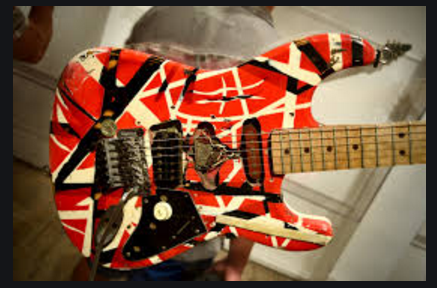 |
References. References for this page's information comes from school, books and the bandstand and made way easier by the folks along the way. |
Find a mentor / e-book / academia Alaska. Always good to have a mentor when learning about things new to us. And with music and its magics, nice to have a friend or two ask questions and collaborate with. Seek and ye shall find. Local high schools, libraries, friends and family, musicians in your home town ... just ask around, someone will know someone who knows someone about music and can help you with your studies in the musical arts. |
|
Always keep in mind that all along life's journey there will be folks to help us and also folks we can help ... for we are not in this endeavor alone :) The now ancient natural truth is that we each are responsible for our own education. Positive answer this always 'to live by' question; 'who is responsible for your education ... ? |
Intensive tutoring. Luckily for musical artists like us, the learning dip of the 'covid years' can vanish quickly with intensive tutoring. For all disciplines; including all the sciences and the 'hands on' trade schools, that with tutoring, learning blossoms to 'catch us up.' In music ? The 'theory' of making musical art is built with just the 12 unique pitches, so easy to master with mentorship. And in 'practice ?' Luckily old school, the foundation that 'all responsibility for self betterment is ours alone.' Which in music, and same for all the arts, means to do what we really love to do ... to make music :) |
 |
"These books, and your capacity to understand them, are just the same in all places. Always bear in mind that your own resolution to succeed, is more important than any other one thing." |
|
Academia references of Alaska. And when you need university level answers to your questions and musings, and especially if you are considering a career in music and looking to continue your formal studies, begin to e-reach out to the Alaska University Music Campus communities and begin a dialogue with some of Alaska's finest resident maestros ! |



